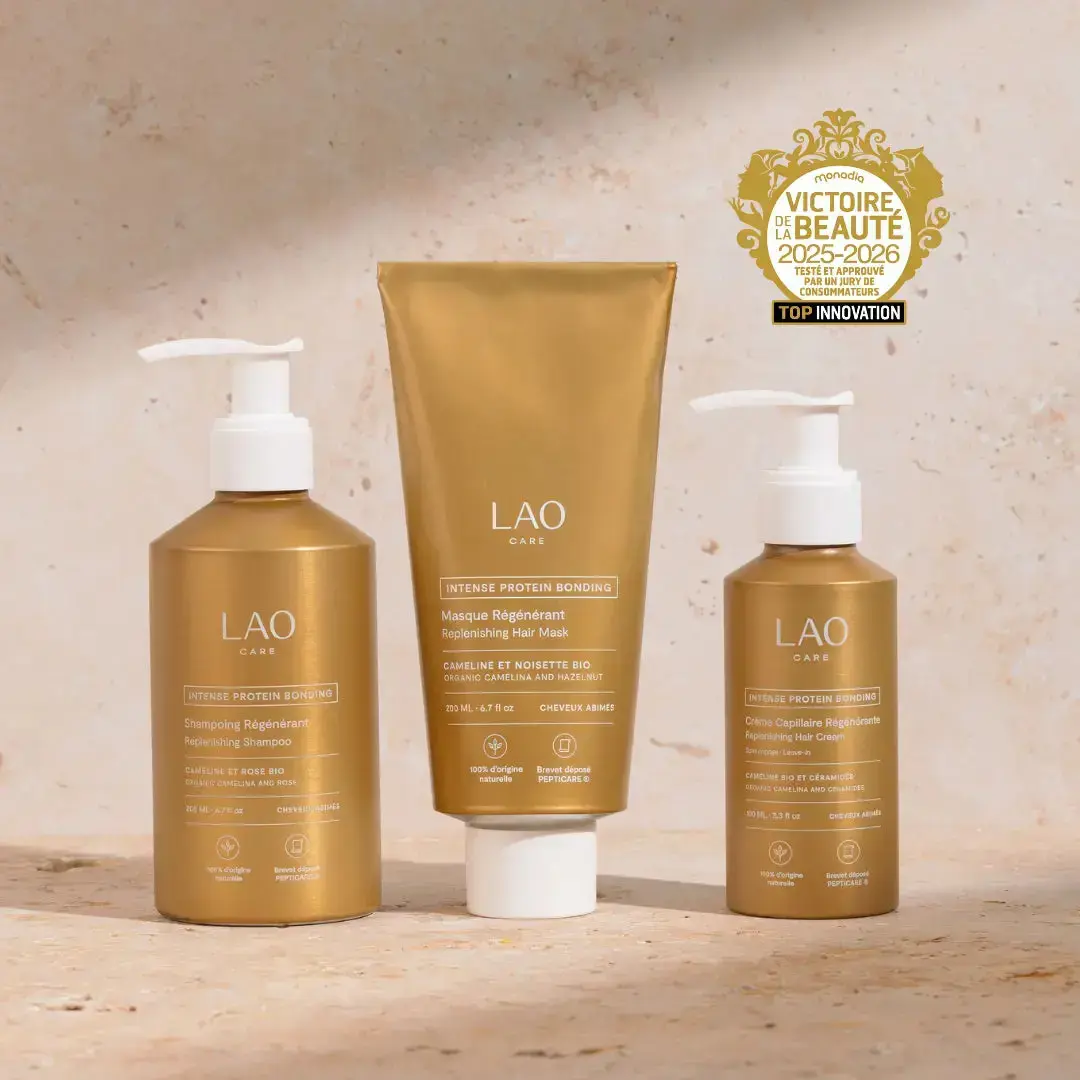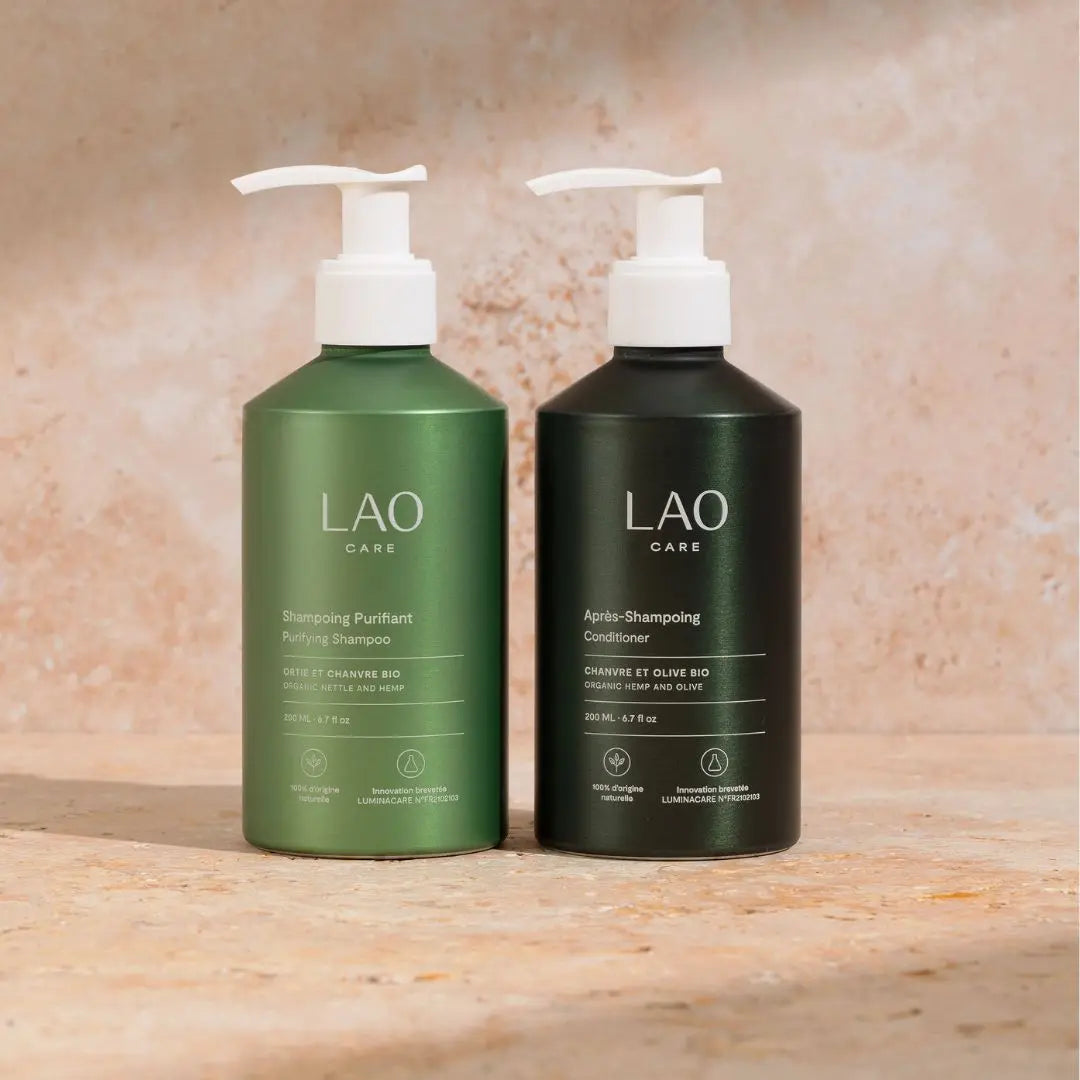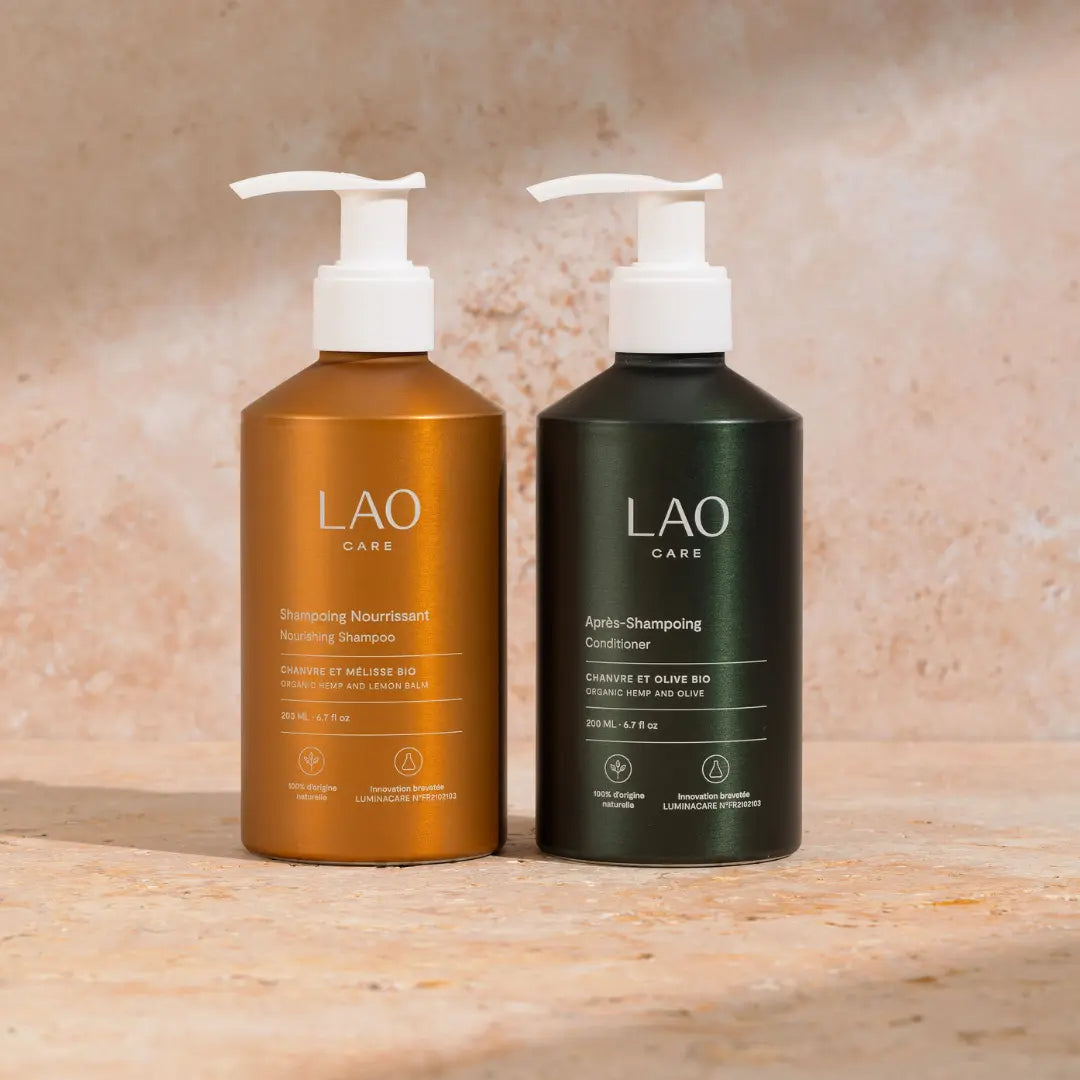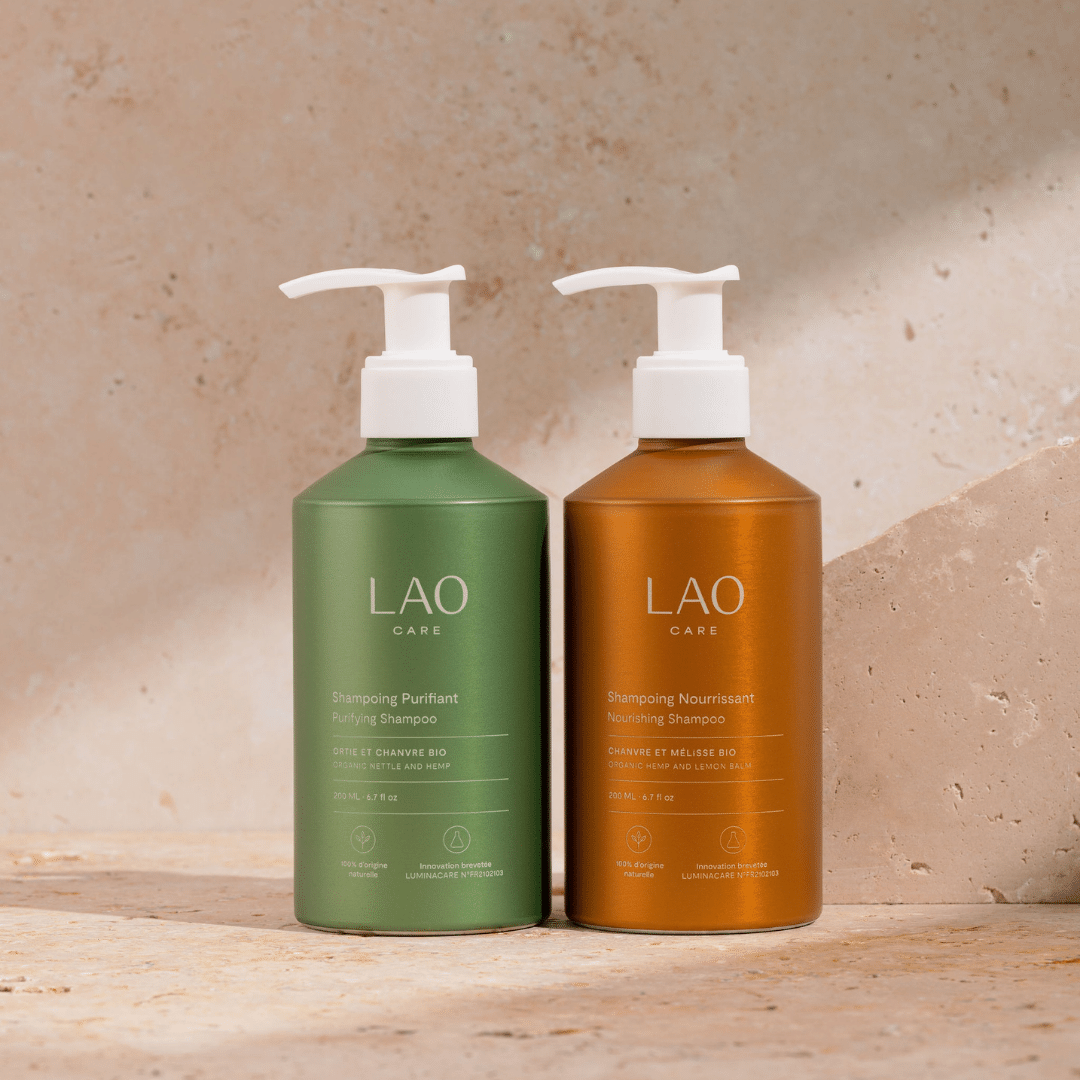Hair with oily roots and dry ends is a problem that mainly affects women from the age of 30. What are oily roots and dry ends , what causes them , and how to adapt your hair routine to this problem : we tell you everything in this article!
Before starting the article, it is necessary to understand that oily roots and dry ends are two very different phenomena . So, first, let's try to understand what forms these two anomalies take.
What are oily roots and dry ends?
Oily roots and dry ends are, as stated above, two very different phenomena. Oily roots, as you probably already know, will have a shiny appearance due to excess sebum and will lack volume, while dry ends will suffer from a lack of sebum or an alteration of the hydrolipidic film , which will make the hair brittle and dry.
At first glance, the phenomenon of oily roots and dry ends is therefore quite paradoxical since one might think that an excess of sebum at the roots cannot give way to a problem linked to a lack of sebum at the ends!
However, don't worry, this problem is quite recurrent and is explained by a poor distribution of sebum throughout the hair: the excess sebum accumulates on the scalp, which suffocates your roots; the hair grows less well and is more fragile. In some cases, there will even be an appearance of patches or dandruff.
Oily roots and dry ends therefore do not have the same origin at all. It is important to understand the difference between the latter: the roots are directly linked to the scalp and it is rather easy to regulate excess sebum while for dry ends it will be more complicated!
Indeed, the tips are at the end of your hair shaft and it is rather difficult to act on the quality of your tips since, let's remember, hair is a dead material . Thus, as soon as the hair is damaged or even towards the end of its life, we cannot perfectly act in depth on it, it is not repairable.
In the rest of this article, we will see that several factors can explain the origin of the “oily roots dry ends” syndrome, but also what solutions can be adopted to deal with this anomaly.
Where do oily roots and dry ends come from?
Oily roots can be caused by a variety of factors. First, excess sebum at the roots can be linked to excessive perspiration on the scalp. Heat and perspiration are two factors that stimulate the sebaceous glands.
The scalp will also feel attacked when the hair is either washed too often or worse, washed too often with sulfate shampoos that will strip the scalp and are, of course, unsuitable for the scalp. Well-hydrated and healthy hair is hair covered by a healthy hydrolipidic film with an acidic pH.
When it comes to dry ends, these are either the result of dehydrated hair or malnourished hair . Dehydrated hair needs water while malnourished hair needs nutrition.
To determine whether your hair is dry and dehydrated, you'll need to determine its porosity . Porosity is a measure of your hair's ability to allow water to pass through its fibers. The more porous your hair is, the more damaged it is.
Several questions will help you define the porosity of your hair:
- Is your hair able to absorb the oil contained in your various treatments?
- Does your hair retain water and take a long time to air dry?
- Do you have the unfortunate tendency to use chemical products and treatments?
- Does your hair get tangled very quickly?
If you answered yes to most of these questions, chances are your hair is porous and therefore dry . But the question now is: where does this porosity come from ?
It is in particular the repeated use of heating appliances such as straighteners, hair dryers or even curling irons that will damage the hair by drying it out and making it dry . Hair porosity can also come from the use of chemical products to color or bleach the hair.
Malnourished hair is more commonly recognized for its split ends. Here, there's nothing better than trimming visible split ends to start a new routine on a solid footing.
For more information on this topic, we invite you to read our article on hair hydration and nutrition.
To address the problem of oily roots and dry ends, you'll need to overhaul your entire hair care routine. Below in this article, you'll find our tips for adapting your hair care routine to address this issue.
What routine should you adopt to combat the phenomenon of oily roots and dry ends?
To tackle the problem of oily roots and dry ends, you need to implement a completely new hair routine tailored to your hair!
First of all, to tackle the problem of oily roots, we recommend using a sulfate-free cleansing product with a pH as close as possible to 5: this will not harm your scalp. We also recommend spacing out your washes to rebalance your scalp: 2 washes maximum per week, with, of course, a suitable gentle shampoo! Results can appear in a few washes or a few weeks, it depends on each person!
Next, to address the problem of dry lengths, we recommend first trimming the dry ends ! As mentioned earlier, you won't be able to repair damaged hair. So, it's best to trim a little to start fresh!
Next, we strongly recommend adopting a hair care routine based on moisturizing treatments for dry hair. This could be, for example, treatments based on aloe vera , a water-rich plant that will be able to moisturize your hair. For undernourished hair, you can do oil baths. Also, choose professional-quality hair masks that offer a good balance between oils and moisture.
Finally, regarding cleansing treatments, we recommend using two types of cleansing treatments. Indeed, a nourishing treatment and a purifying treatment can be very beneficial for your hair, which suffers from both excess sebum on the scalp and a lack of sebum on the ends. The natural and gentle cleansing treatment will soothe your scalp but above all moisturize your lengths. So don't hesitate to alternate your two cleansing treatments for ideal results!
Your new routine is ready, but now you'll also need to adopt some new habits!
The gestures and accessories to adopt for perfect natural hair
Before adopting the correct actions, there are first of all actions to avoid ! For example, heat: whether it comes from water or heating appliances, heat will damage the hair structure and then dry it out. If you can't give up these appliances, we strongly advise you to apply a protective treatment before contact with heat. The same goes for coloring or bleaching. Indeed, although we want to follow the trends, coloring and bleaching damage and weaken the hair significantly.
Next, we strongly recommend investing in a silk pillowcase or even silk scrunchies! Silk will help limit friction and damage to your hair. It's also important to remember that it's important to sleep on a clean pillowcase that hasn't accumulated too much dirt. Otherwise, your pillowcase could affect your skin and, more importantly, your scalp!
Gentle brushing from bottom to top with a suitable brush (horsehair or wood) or a comb will also reduce friction between the hair and gently detangle.
Finally, we also recommend eating healthy and prioritizing certain foods that influence the quality and beauty of your hair. You can find our article on this topic right here.
Conclusion
In conclusion, as you will have understood, there is only one golden rule: adopt new habits ! You will have to treat each problem differently with patience and perseverance.
Oily roots can quickly balance out with a suitable routine , but it will take more time and probably a little trim for the lengths! A few months of adaptation and you will have healthy hair again.






Leave a comment